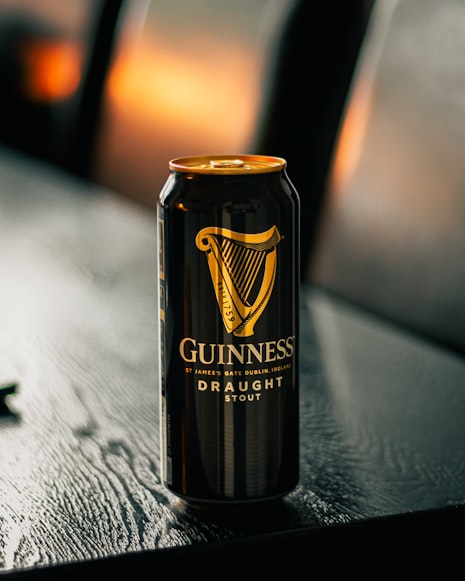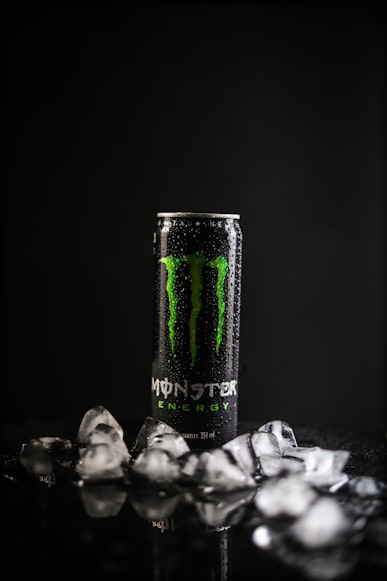Can Dogs Eat Salmon?

Yes, dogs can eat salmon as it is a good source of omega-3 fatty acids, protein, and other nutrients. However, it is important to feed salmon to dogs in moderation and to take precautions to ensure it is safe for consumption.
Benefits of Salmon for Dogs:
- Omega-3 fatty acids: Salmon is an excellent source of omega-3 fatty acids, which are essential for heart health, cognitive function, and skin and coat health.
- Protein: Salmon is a high-quality source of protein, which is essential for building and repairing tissues.
- Minerals: Salmon contains various minerals, including potassium, phosphorus, and selenium, which are important for overall health.
- Antioxidants: Salmon contains antioxidants that can help protect dogs’ cells from damage.
Precautions for Feeding Salmon to Dogs:
- Cooked only: Never feed dogs raw salmon as it may contain parasites. Salmon should be thoroughly cooked before giving it to dogs.
- Remove bones and skin: Before feeding salmon to dogs, remove all bones and skin to prevent choking or digestive upset.
- Avoid smoked salmon: Smoked salmon is high in salt and can be harmful to dogs.
- Limit intake: While salmon is healthy for dogs, it should be fed in moderation. Too much salmon can cause weight gain or digestive issues.
- Check for allergies: Some dogs may be allergic to salmon. If your dog shows any signs of an allergic reaction, such as itching, vomiting, or diarrhea, stop feeding salmon and consult your veterinarian.
Recommended Serving Guidelines:
The amount of salmon you feed your dog will depend on their size and activity level. As a general rule of thumb:
- Small dogs: 1-2 ounces per meal
- Medium dogs: 2-4 ounces per meal
- Large dogs: 4-6 ounces per meal
How to Feed Salmon to Dogs:
- Grilled or baked: Grill or bake salmon fillets and remove any bones or skin.
- Canned salmon: Choose canned salmon that is packed in water, not oil or salt.
- Treats: There are various salmon-based treats available for dogs, such as salmon jerky or freeze-dried salmon.
Conclusion:
Yes, dogs can eat salmon, but it is important to feed it in moderation and to take precautions to ensure it is safe for consumption. Salmon is a healthy source of omega-3 fatty acids, protein, and other nutrients that can benefit dogs’ overall health.
Nutritional Value of Salmon:

Salmon is a nutritious fish that is often safe for dogs to eat in moderation. It is a good source of protein, omega-3 fatty acids, and antioxidants.
Nutritional Value of Salmon
- Omega-3 fatty acids: Omega-3 fatty acids are essential fatty acids that are important for heart health, brain function, and immune system function. Salmon is a good source of both EPA and DHA, two types of omega-3 fatty acids that are particularly beneficial for dogs.
- Protein: Protein is an essential nutrient that is necessary for muscle growth and repair. Salmon is a good source of high-quality protein that is easily digestible.
- Antioxidants: Antioxidants are compounds that help to protect cells from damage. Salmon contains several antioxidants, including astaxanthin, which has been shown to have anti-inflammatory and antioxidant effects.
How to Feed Salmon to Dogs
Salmon can be fed to dogs cooked or raw. If you are feeding your dog cooked salmon, make sure to remove any bones. You can also give your dog canned salmon, but be sure to rinse it off first to remove any excess salt.
Start by feeding your dog a small amount of salmon to see how they tolerate it. If they do not experience any digestive upset, you can gradually increase the amount you feed them.
How Much Salmon Can Dogs Eat?
The amount of salmon that you can feed your dog will depend on their size and activity level. A general rule of thumb is to feed no more than 2-3 ounces of salmon per week.
Benefits of Feeding Salmon to Dogs
There are several benefits to feeding salmon to dogs, including:
- Improved heart health
- Reduced inflammation
- Improved cognitive function
- Stronger immune system
- Shinier coat
Conclusion
Salmon is a nutritious fish that is safe for dogs to eat in moderation. It is a good source of protein, omega-3 fatty acids, and antioxidants. Feeding your dog salmon can provide them with several health benefits.
Health Benefits for Dogs:

As pet owners, we want to provide our furry companions with the best possible nutrition. While salmon is a nutritious fish for humans, many dog owners wonder if it’s safe for their canine friends. The answer is yes, but with some important considerations.
Health Benefits of Salmon for Dogs:
- Supports Joint Health: Salmon is rich in omega-3 fatty acids, which have anti-inflammatory properties. These fatty acids can help reduce joint pain and stiffness associated with conditions like arthritis.
- Improves Skin and Coat Condition: Omega-3 fatty acids also promote healthy skin and coat. They help reduce itching, dry skin, and dull fur, giving your dog a lustrous and radiant appearance.
- Reduces Inflammation: Omega-3 fatty acids have anti-inflammatory effects throughout the body. This can benefit dogs with inflammatory conditions, such as allergies, digestive issues, and cardiovascular disease.
Considerations for Feeding Salmon to Dogs:
- Cooked vs. Raw: Raw salmon can contain parasites that can be harmful to dogs. Always cook salmon thoroughly before feeding it to your pet.
- Amount: Salmon should be fed to dogs in moderation. The amount you give will depend on your dog’s weight, age, and activity level.
- Fat Content: Salmon is a fatty fish, which can be too much for some dogs, especially those with pancreatitis or other digestive problems.
- Bones: Salmon bones can be a choking hazard for dogs. Remove all bones before feeding salmon to your pet.
- Mercury: Salmon can contain trace amounts of mercury, which can be toxic in high doses. Choose salmon from low-mercury sources, such as wild-caught Alaskan salmon.
Conclusion:
Salmon can be a healthy and nutritious treat for dogs, providing numerous health benefits. However, it’s important to follow these feeding guidelines to ensure the safety and well-being of your pet. By feeding salmon in moderation and following our recommendations, you can help your dog reap the rewards of this delicious and nutritious fish.
Safe Preparation for Dogs:

Yes, dogs can eat salmon in moderation as part of a healthy diet. However, it’s important to prepare and feed it safely to avoid any potential health risks.
Benefits of Salmon for Dogs
Salmon is an excellent source of:
- Omega-3 fatty acids: Support heart health, skin health, and joint function.
- Protein: Essential for muscle growth and repair.
- Vitamins (B12, D, niacin): Support the nervous system, bones, and immune function.
- Minerals (selenium, potassium): Protect cells and support overall health.
Safe Preparation for Dogs:
To ensure that salmon is safe for your dog, follow these steps:
- Cook Thoroughly: Cook salmon thoroughly by grilling, baking, or boiling. Raw salmon may contain parasites that can make your dog sick.
- Remove Skin and Bones: Remove the skin and any bones before feeding the salmon to your dog, as they can be choking hazards or cause digestive problems.
- Avoid Raw Salmon: While cooked salmon is safe for dogs, raw salmon should be avoided due to the risk of parasites.
How Much Salmon to Feed Your Dog:
The amount of salmon you should feed your dog depends on their size, activity level, and overall health. A good rule of thumb is to feed 1-2 ounces of cooked salmon per week as a treat or in addition to their regular diet.
Caution:
- Allergies: Some dogs may be allergic to salmon, so introduce it gradually to their diet and watch for any signs of an allergic reaction, such as itching, hives, or vomiting.
- Mercury: Salmon can contain low levels of mercury. While it’s unlikely to cause harm to dogs in small doses, limit the amount of salmon you feed them to avoid any potential risks.
- Digestive Issues: If your dog has a sensitive stomach, feeding them salmon may cause digestive upset, such as diarrhea or vomiting. Start with a small amount and monitor their reaction.
In conclusion, salmon can be a healthy addition to your dog’s diet when prepared and fed safely. Cook it thoroughly, remove the skin and bones, and avoid feeding raw salmon to ensure your dog’s health and well-being.
Recommended Serving Sizes:

Yes, dogs can eat salmon. Salmon is a nutritious fish that is packed with protein, omega-3 fatty acids, and other essential nutrients. These nutrients are beneficial for dogs of all ages and can help to promote a healthy coat, skin, and immune system.
Benefits of Salmon for Dogs:
- Rich in protein: Protein is essential for muscle growth and repair.
- High in omega-3 fatty acids: Omega-3 fatty acids have anti-inflammatory properties and can help to reduce the risk of heart disease, arthritis, and other health conditions.
- Good source of vitamins and minerals: Salmon contains vitamins A, D, and B12, as well as minerals such as calcium, potassium, and phosphorus.
- Low in sodium: Salmon is a low-sodium fish, making it a good choice for dogs with heart disease or other health conditions that require a low-sodium diet.
How to Feed Salmon to Your Dog:
- Cooked: Salmon should be cooked before feeding it to your dog. Cooking will kill any bacteria that may be present in the fish.
- Remove bones: Salmon bones can be dangerous for dogs, so it is important to remove them before feeding your dog the fish.
- No skin: Salmon skin can be tough and difficult for dogs to digest, so it is best to remove it before feeding your dog the fish.
- Start with a small amount: When you first introduce salmon to your dog, start with a small amount to make sure that your dog does not have any adverse reactions.
Recommended Serving Sizes:
- Small dogs: 1-2 ounces per week
- Medium dogs: 2-4 ounces per week
- Large dogs: 4-6 ounces per week
It is important to note that salmon should not be the main part of your dog’s diet. Salmon is a rich fish, and too much of it can lead to weight gain and other health problems. Salmon should be fed as a treat or as a supplement to your dog’s regular diet.
Conclusion:
Yes, dogs can eat salmon. Salmon is a nutritious fish that is packed with protein, omega-3 fatty acids, and other essential nutrients. These nutrients are beneficial for dogs of all ages and can help to promote a healthy coat, skin, and immune system. When feeding salmon to your dog, it is important to cook it first, remove the bones and skin, and start with a small amount to make sure that your dog does not have any adverse reactions.
Potential Concerns:
Salmon is a popular fish that is often considered a healthy choice for humans. However, when it comes to dogs, there are some potential concerns to consider before feeding them this fish.
Benefits of Salmon for Dogs
- Rich in omega-3 fatty acids, which support heart, joint, and cognitive health
- Good source of protein and essential amino acids
- Contains antioxidants that can help protect against disease
Potential Concerns:
High Fat Content
Salmon is relatively high in fat, which can be a problem for some dogs. Eating too much fat can lead to digestive upset, such as diarrhea, vomiting, and pancreatitis. Dogs with sensitive stomachs or those prone to pancreatitis should avoid eating salmon.
Thiaminase
Salmon contains an enzyme called thiaminase, which can destroy thiamine, an essential vitamin for dogs. Thiamine deficiency can lead to neurological problems such as seizures and balance issues. To prevent this, avoid giving your dog raw salmon and limit cooked salmon to small amounts.
Other Considerations
- Choose wild-caught salmon over farmed salmon, as farmed salmon may contain higher levels of contaminants.
- Remove the skin and bones before feeding salmon to your dog.
- Cook salmon thoroughly to kill any bacteria or parasites.
- Start by feeding your dog a small amount of salmon to see how they tolerate it.
- If your dog has any digestive issues or concerns about thiamine, consult with your veterinarian before feeding them salmon.
Conclusion
While salmon can be a healthy treat for dogs in moderation, it’s important to be aware of the potential concerns associated with feeding it to your pet. By choosing wild-caught salmon, cooking it thoroughly, and limiting the amount you give to your dog, you can help minimize the risks and enjoy the benefits of this nutritious fish.
Tips for Feeding Salmon to Dogs
- Start with small amounts and gradually increase as tolerated.
- Cook salmon thoroughly without adding any seasonings or spices.
- Remove the skin and bones before feeding.
- Offer salmon as a treat or a topper for their regular food.
- Monitor your dog for any digestive or neurological issues and discontinue feeding if any problems occur.
Avoid Salmon with Additives:
As a pet lover and a passionate advocate for dog health, I often get asked, “Can dogs eat salmon?” The answer to this question is both a resounding yes and a cautious maybe. While salmon is a highly nutritious fish that can provide your furry friend with numerous health benefits, there are certain types of salmon that should be avoided.
Benefits of Salmon for Dogs
Salmon is a rich source of:
- Omega-3 fatty acids: These essential fatty acids promote healthy skin and coat, reduce inflammation, and support brain and heart health.
- Protein: Salmon provides lean protein, which is crucial for building and maintaining muscle mass.
- Vitamins: Salmon is a good source of vitamins A, B12, and D, which are essential for overall health and well-being.
- Minerals: Salmon is also rich in minerals such as potassium, selenium, and zinc, which support bone health, heart function, and immune system function.
Cautions Regarding Salmon for Dogs
While fresh, uncooked salmon is generally safe for dogs to eat, there are certain types that should be avoided:
1. Smoked or Canned Salmon: These may contain harmful preservatives that can be toxic to dogs.
2. Farmed Salmon: Farmed salmon may have higher levels of contaminants, such as pesticides and pollutants, which can pose health risks to dogs.
How to Feed Salmon to Your Dog
If you decide to feed salmon to your dog, here are some tips:
- Choose wild-caught salmon over farmed salmon.
- Cook the salmon before feeding it to your dog. Cooking kills any harmful bacteria and makes the salmon easier to digest.
- Remove all bones and skin from the salmon before feeding it to your dog.
- Start by feeding your dog small amounts of salmon to ensure they don’t have any adverse reactions.
Conclusion
Salmon can be a healthy and nutritious treat for your dog. However, it’s important to be aware of the potential risks and choose the type of salmon you feed carefully. By following these guidelines, you can provide your beloved companion with the benefits of this delicious fish.
Consult with Your Veterinarian:
Salmon is a nutritious and protein-rich fish that can be a healthy addition to your dog’s diet. However, it’s essential to consider certain factors before feeding your furry friend this seafood delicacy.
Benefits of Feeding Dogs Salmon:
- High in Protein: Salmon is an excellent source of high-quality protein, which is essential for muscle development and repair.
- Rich in Omega-3 Fatty Acids: Salmon contains abundant omega-3 fatty acids, which support heart health, reduce inflammation, and promote a healthy coat.
- Good Source of Vitamins and Minerals: Salmon is a good source of important vitamins and minerals, including vitamin B12, niacin, and phosphorus.
Potential Risks:
- Mercury Contamination: Some salmon species, especially larger and older ones, can have elevated mercury levels. This can pose a health risk to dogs if consumed in large quantities.
- Bones: Canned salmon may contain bones, which can be a choking hazard or cause digestive problems.
- Allergies: Some dogs may be allergic to fish, including salmon.
How to Feed Dogs Salmon Safely:
- Consult with Your Veterinarian: Before feeding your dog salmon, consult with your veterinarian to discuss any specific dietary needs or restrictions.
- Choose Fresh or Canned Salmon: Opt for fresh or canned salmon without added salt or oil.
- Remove Bones: Remove all bones from canned salmon before feeding it to your dog.
- Start Slowly: Introduce salmon gradually to your dog’s diet to monitor their reaction.
- Limited Quantities: Salmon should be fed in moderation as part of a balanced diet.
Monitoring Your Dog’s Reaction:
- Observe for any Allergic Reactions: Watch for signs of an allergic reaction, such as itching, hives, or difficulty breathing.
- Check for Digestive Issues: Monitor your dog’s stools for any changes in consistency or frequency.
- Look for Excessive Thirst or Urination: Excessive thirst or urination can indicate an underlying health issue that may require veterinary attention.
Conclusion:
Salmon can be a healthy and tasty treat for dogs when fed in moderation. However, it’s essential to consult with your veterinarian, choose appropriate salmon sources, and monitor your dog’s reaction to ensure a safe and beneficial feeding experience.
Alternative Sources of Omega-3s:
Yes, dogs can eat salmon. This fish is a healthy source of omega-3 fatty acids, which are essential for a dog’s overall health. Omega-3s help to keep a dog’s skin and coat healthy, promote joint health, and support cognitive function.
When feeding salmon to your dog, it is important to cook it thoroughly. Raw salmon can contain a parasite that can be harmful to dogs. Cooked salmon can be given to dogs as a treat or as part of a regular diet.
How Much Salmon Can I Give My Dog?
The amount of salmon you should give your dog depends on their size and activity level. A good rule of thumb is to give your dog about 1 ounce of cooked salmon per 20 pounds of body weight, once or twice per week.
What Are the Benefits of Feeding Salmon to My Dog?
In addition to being a good source of omega-3 fatty acids, salmon is also a good source of protein, vitamins, and minerals. These nutrients are essential for a dog’s overall health and well-being.
What Are the Risks of Feeding Salmon to My Dog?
The main risk of feeding salmon to your dog is that it can contain a parasite that can be harmful to dogs. This parasite is called Neorickettsia helminthoeca. Symptoms of Neorickettsia helminthoeca infection in dogs include vomiting, diarrhea, and weight loss.
To reduce the risk of your dog getting Neorickettsia helminthoeca, it is important to cook salmon thoroughly before feeding it to your dog. Cooking salmon to an internal temperature of 145 degrees Fahrenheit will kill the parasite.
Can Dogs Eat Raw Salmon?
No, dogs should not eat raw salmon. Raw salmon can contain a parasite that can be harmful to dogs. This parasite is called Neorickettsia helminthoeca. Symptoms of Neorickettsia helminthoeca infection in dogs include vomiting, diarrhea, and weight loss.
Alternative Sources of Omega-3s:
If you are not comfortable feeding your dog salmon, there are a number of other ways to get omega-3s into their diet. These include:
- Fish oil supplements
- Salmon skin treats
- Krill oil



















